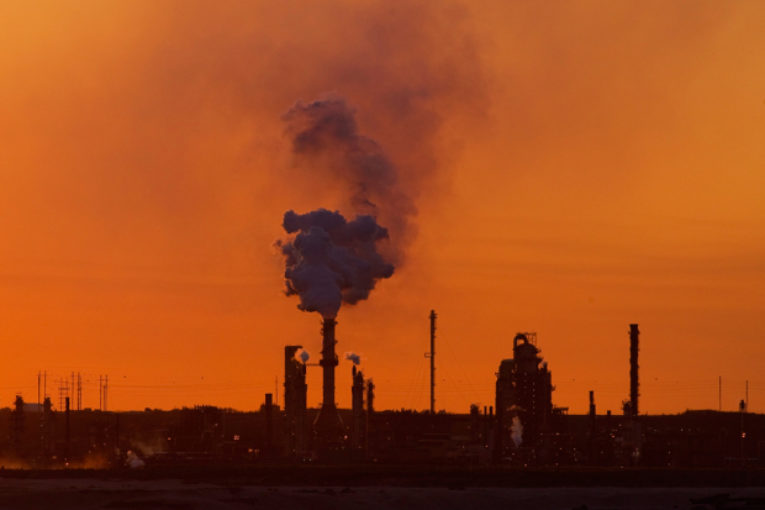
After a summer in the doldrums, oil prices have suddenly — and at long last — enjoyed a pretty awesome run. This month alone, benchmark West Texas intermediate has gained nearly five bucks, reaching above US$55 a barrel for the first time since 2015. European benchmark Brent crude has risen pretty much in step, maintaining above US$60 a barrel so far in November.
So are happy days here again (at least for oil investors, if not for the rest of us schlubs who have to pay more for gas)? Well, maybe. But a lot will depend on what happens when the Organization of Petroleum Exporting Countries gets together for its 173rd meeting in Vienna next week.
At the top of the agenda will be the production-cuts agreement OPEC brokered a year ago and whether, by how much and by how long, to extend it beyond the current March 2018 end-date. Despite signals from OPEC that the production agreement will be extended beyond the current March 2018 end-date — Iranian oil minister Bijan Namdar Zanganeh said earlier this week that most members want it so — the outcome is far from clear.
The OPEC meeting comes amid a recent turn in oil market sentiment. WTI futures earlier this month switched over from a contango position, where six-month contracts were higher than spot prices, to backwardation, where futures are priced lower. That’s generally taken to indicate higher immediate demand, so it’s bullish for prices, at least in the short term.
But there is more behind the recent gains in oil markets than the OPEC agreement. On the supply side, heightened geopolitical tensions in the Mideast have raised the spectre of disruptions. Some analysts are looking at the escalating proxy war between Saudi Arabia and Iran in Yemen and seeing the possibility of outright conflict. And the “anti-corruption” power grab by Saudi Crown Prince Mohammed bin Salman — which has caught up the military, business and religious leaders, and his own family members in its net — is another potential destabilizer for the region and for OPEC’s most powerful member.
Obviously, trouble in the Mideast supports expectations for higher prices. But the concerns (or, for oil bulls, hopes) might be overblown. Bin Salman’s domestic overhaul is big news, but it doesn’t look likely to impact oil production. As for a “hot” war, Saudi-Iranian tensions have been going on for years without escalating into open conflict, and there are a number of military, political and geographic (i.e. the Persian Gulf) reasons to believe they won’t anytime soon.
So here’s a question: if the current worry about Mideast instability ends up amounting to not much, what will happen to oil prices? Another way to ask that question is, absent geopolitical factors, how much have OPEC’s production cuts been working?
There are no easy answers. It seems, at least, that compliance to the agreement is high. Yet October was the first month this year both OPEC and non-OPEC members (led by Russia) collectively reached their production targets. Iraq, the second-largest exporter of crude to the U.S., is a serial under-achiever: it has managed just 54 per cent of its production cutback on average this year, according to Bloomberg. Exogenous factors have also helped OPEC meet overall targets — for instance, the political and economic nightmare in Venezuela, whose oil output hit a three-decade low last month.
OPEC, however, is only a cartel — it’s not a monopoly. Other producers, especially the U.S. shale industry, have stepped forward while OPEC has cut back. According to the Energy Information Administration, U.S. oil production rose to nearly 9.65 million barrels a day in the first full week of November. That’s a multi-year high, but what’s even more remarkable is how elastic shale production has proven to be: it’s risen nearly 15 per cent since a mid-2016 low.
One of OPEC’s goals is the reduction in the glut of oil sitting in reserves. But U.S. crude inventories have been both resilient (trending above five-year averages) and volatile. The week before last, American Petroleum Institute data showed them rising unexpectedly by 6.5 million barrels; API data for last week had them declining by pretty much the same amount. (No doubt EIA data coming out Wednesday will add another wrinkle.) Meanwhile, no one really knows how much crude China has been stockpiling, but the International Energy Agency estimates the country has been buying it up at a record pace this year.
Another potential headache for OPEC is Russia, whose participation in the production agreement is key, and whose compliance so far has been fairly high. Russian producers, however, have reportedly been chafing at the possibility of an extension of cuts, which they (rightly) see as subsidizing higher-cost producers. Energy minister Alexander Novak could push for OPEC to delay any decision until next year.
As it stands, markets seem to be betting that OPEC and its partners will play it safe and extend the agreement next week. But that only raises the stakes for investors, who are likely to see anything less — say, a shorter extension, or no extension at all, or a deferral until next year — as a big disappointment.
For OPEC, the longer-term challenge might be that production cuts work too well, in that they benefit U.S. producers who have already been ramping up production a) because prices support it and b) because they can. Meanwhile, OPEC, and especially Saudi Arabia, are limiting the upside from the higher prices they’re creating, while sacrificing market share.
When the supply-demand balance stabilizes, how weakened will OPEC and its production-cut partners be?
You can read more of the news on source
